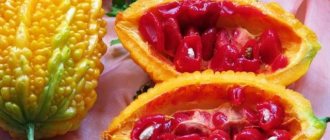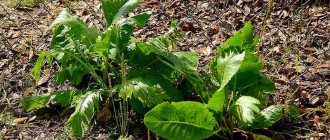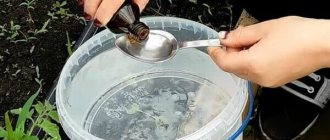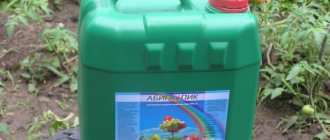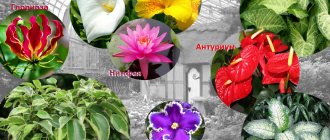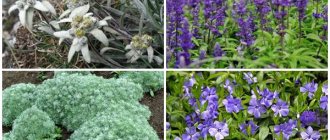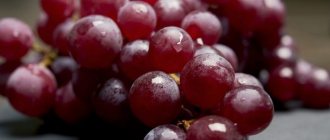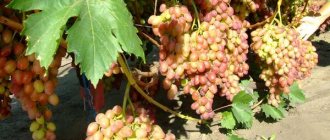What is commonly called a "berry" in blackberries is not actually a berry. This type of fruit is called a prefabricated drupe. The blackberry flower is multi-pistillate, and around each pistil a small, juicy fruit with one seed inside is formed. A lot of these fruits, collected together, are that very tasty and aromatic blackberry.
Collective drupes are formed in many plants. Some of them are blue-black and so similar to blackberries that they mislead the uninitiated. Plants whose fruits resemble blackberries are discussed in this review.
Blackberry video
Blackberries are similar to raspberries in the appearance of the bush and the structure of the berries. However, its fruits are larger and much darker in color. Blackberries may appear black, but in living plant life there is no distinct black color. The berries of this plant are rich purple in color, which is why they appear black.
Sometimes the yield of blackberries is amazing; there are much more fruits on the branches than green leaves. The berry, similar to raspberries, has a very pleasant fragrant aroma and sweet and sour taste. Blackberries are usually picked in the early hours of sunrise. Immediately after picking, blackberries must be eaten or processed, since their fruits cannot be stored for a long time. In just a few hours, the berries become limp and are no longer suitable for consumption.
If blackberries are immediately placed in the refrigerator, the freshness of the berries can be preserved for up to 5 days.
Mulberry
Some people who see this berry for the first time ask: “Can a berry like a blackberry grow on a tree?”
Both fruits are actually similar in both shape and color. But only in appearance. Everything else is completely different between blackberries and mulberries.
Firstly, mulberry has a completely different taste - the berry is tender and very juicy. Secondly, it grows on a tall, powerful tree that bears fruit for up to 200 years. Thirdly, the plant belongs to the Mulberry family, hence the other name for the fruit - here, mulberry or tyutina.
Mulberries, unlike raspberries and blackberries, do not tolerate transportation. They wrinkle and flow easily. Therefore, it is possible to enjoy fresh mulberries only in the places where they grow: in the North Caucasus and the Lower Volga. In other regions this tree is extremely rare.
Mulberries can be black, white or red in color. They usually reach a size of 2-3 centimeters. But there is also a tree that has both leaves and fruits of gigantic size. The berry grows up to 5.5-6 centimeters, and the leaf - up to half a meter. This variety is called Shelly (Leonid Ilyich mulberry).
Purchasing seeds in bulk: 3 signs of a reliable store
How to propagate plums: the best ways to grow, care and plant with your own hands. Video instructions and 120 photos
At what distance to plant grapes from each other: tips and recommendations from professionals on planting grapes on a personal plot (125 photos and videos)
Mulberry fruits are a delicious filling for pies; wine and vodka are made from them.
Traditional medicine knows about the ability of mulberries to lower blood sugar levels and normalize blood pressure. In Asia, mulberry is used to treat sore throat, cough and stomatitis.
In the East, the mulberry is considered a sacred tree, and in Japan the wood is used to make paper for the national currency. By the way, the word silk comes from the name of the tree whose leaves feed the larvae of the silkworm, which is used to produce silk thread.
Strawberry (bristle) raspberry description
For our latitudes, strawberry raspberries are still rare. It is a woody subshrub with small-grained, conical red berries on its fruiting branches, which appear in September. The berries are very shiny, one might say glossy. Therefore, they are very popular among confectioners. They are good for decorating sweet pies, pastries and cakes. The height of the bush is 0.5 m. It reproduces by layering and is very aggressive in the garden.
Well suited for hedges as the branches are very thorny.
Care
Like planting, caring for yellow raspberries is almost identical to caring for a plant with red berries.
Watering
Raspberries especially need abundant watering during flowering, ovary formation and fruit ripening. You need to pour a ten-liter bucket of water onto one plant. The amount of watering is increased if the weather is dry.
After watering, the soil is loosened to provide air access to the roots, and then the tree trunk area is mulched.
Watering can be carried out in two ways: by sprinkling and by running water by running water through grooves dug around the raspberry tree.
In autumn, before the onset of cold weather, raspberry bushes should also be watered abundantly.
Top dressing
For good growth and fruiting, raspberries need nitrogen, potassium, and phosphorus. Nitrogen fertilizers are especially important for shrubs in the first three years of life. The first feeding is done in May, two weeks later a second dose of fertilizer is applied, and after another 144 days the fertilizer is fed a third time.
This scheme is needed precisely in the first year after planting; in subsequent years, one spring feeding is sufficient. To do this, use a urea solution at the rate of 50 g per ten-liter bucket of water.
In the fall, every 2 years, rotted manure is applied at the root, in an amount of 3 kg per 1 square meter.
Garter
Thanks to the garter, the yellow raspberry bushes will not be deformed, and the branches will not break off under their own weight. This is especially true for tall, spreading varieties. The berries will ripen faster if they are evenly illuminated by the sun. Harvesting will become more convenient, since the branches will not spread along the ground, and the likelihood of raspberries being affected by fungal diseases will decrease.
Types of garters:
- fascicular;
- fan;
- on the trellises.
For the first method, a high, about 2-meter peg or rail is driven into the raspberry bush. The top of the support should be half a meter higher than the plant. 6-10 shoots are collected around the peg at a height of about 1.5 m. The centers and tops of the branches are tied to a support. The tops are bent in an arc. The advantages of this method are simplicity and cost-effectiveness. Disadvantages: poor ventilation and uneven distribution of sunlight.
Another way of gartering: fan. Between individual raspberry bushes, slats about 2 m in length are hammered. Each bush is divided into two parts and tied to different slats. The method is quite difficult to implement, but very effective. Air circulates freely in the raspberry garden, each plant is evenly illuminated, the branches do not deform or break off, it is convenient to harvest and care for raspberries.
The most universal method: garter on trellises. To do this, take two columns with supports, about two meters long. They are installed at a distance of 3-4 m from one another. They dig the ground to a depth of 1.5 m, between them they stretch a wire in three rows, to which the shoots are tied. Gartering remontant raspberries onto trellises helps increase yields.
Raspberry garter on trellises is widespread throughout the world.
Pruning and preparation for winter
Yellow raspberries need to be pruned twice a year. In spring, dry, frozen, damaged shoots are removed. The branches are shortened by about 20 cm, to the first healthy bud.
In autumn, yellow raspberries are pruned as follows: the tops of the shoots of the first year are shortened by about 15 cm, then the remaining parts are tied into bunches and bent to the ground. In winter they will be covered with snow and avoid freezing. If severe frosts are expected, the raspberries are additionally covered with straw and sprinkled with earth.
The branches that bear fruit are cut off at the root, then small shoots at the roots are removed, which are unlikely to survive the winter.
Cloudberry photo and description
The second name is swamp guard or royal berry. Found in swampy areas and moss tundras. The bushes are subshrubs of small height - about 30cm. Berries with a diameter of 1.5 cm, clustered drupes, amber color.
Used in compotes, jams, liqueurs and soaked. Both fruits and leaves are widely used in folk medicine. Pushkin's favorite berry.
What is the name of the black berry that only grows on a tree?
The most famous black berry, reminiscent of black raspberries or blackberries, is mulberry , the fruit of the mulberry tree. Under natural conditions, such a tree grows up to 20 m, with several thick trunks. Mulberry grows in warm southern regions.
White mulberry berries are also eaten and used for making preserves and jams. The tree grows and bears fruit for more than 200 years, growing up to 30-35 m. Black mulberry is slightly lower, with delicious juicy berries that have a grape flavor.
Strawberry spinach-raspberry description
A very unusual annual plant with large aromatic berries. Spinach raspberries have another popular name - Marya many-faced. The correct name is multileaf spinach.
The height of spinach is 0.5 m. Multileaf spinach branches from the very bottom of the plant and has a spreading shape. A very beautiful plant. And since the berries do not fall off and have a very long shelf life, such exquisite decorativeness is very pleasing to many gardeners.
The fruits are juicy, sweet, large, elongated. The fruits, similar to raspberries, are attached at the base of the petioles. The productivity is very high. Not only the fruits of the plant are edible, but also the leaves. They have medicinal properties. Multileaf spinach is a cold-resistant plant that can easily withstand the aggression of spring frosts, so the seeds can be safely sown directly into the ground.
Is it possible to plant it in the country?
Despite the fact that mulberry is heat-loving, it can be grown in gardens in the middle zone. Popular frost-resistant varieties:
- Dark-skinned;
- Admiral's;
- Royal;
- SHELLY #150;
- Black Baroness.
All these species tolerate frosts down to –30 ºС well, but need good shelter. In order to be able to cover a tree, protecting it from freezing, it is necessary to properly shape it when growing. Timely pruning is necessary to ensure that the crown height does not exceed 2 m. The trunk is wrapped in several layers of spunbond for the winter. With good care, growing mulberries in the countryside is not difficult, and the yield of these varieties is quite high.
Popular plant varieties of different colors
There are several other plants whose berries are very similar to raspberries. These include Logan berry, or raspberry. This is a popular blackberry-raspberry hybrid that blooms all summer. The fruits are large, ripen in October–early November, but are not used fresh.
A very tasty, aromatic, dark cherry berry with a sweetish-sour taste is knyazhenika. A low herbaceous plant found in forests and peat bogs.
Yellow
Yellow raspberries are much sweeter and tastier than red ones, but they don't last long. The berries can be eaten fresh or used for processing.
Yellow raspberry varieties:
- Amber is a mid-late variety with small but tasty, sweet and aromatic berries. It is not susceptible to diseases, and begins to bear fruit from the end of July to September.
- Beglyanka is not considered a productive variety, but has an extraordinary taste and aroma. It is not afraid of fungal diseases and pests, but may suffer from spider mites.
- Golden Autumn is a remontant variety with large berries and high yield. It bears fruit until frost, is not afraid of temperature changes, but loves sunlight very much.
These popular yellow-fruited varieties are unpretentious and easy to care for, producing good yields with minimal effort.
White
The first varieties of white raspberries appeared in the last century, but were inferior in taste to ordinary red berries. Thanks to breeding work, many noteworthy white-fruited varieties have appeared.
The best white varieties:
- Golden Everest is a well-known remontant variety with large berries. The fruits ripen in early autumn and have a pleasant sweet and sour taste. The plant is not afraid of frost and disease.
- Honey raspberry is a common, non-remontant variety. The yield is up to 8 kg per bush. Raspberries are resistant to any diseases and pests, but are afraid of low temperatures. The berries are large, white, with a bright aroma and sweet taste.
- White spirina is frost-resistant, medium-yielding, but with very large berries. This is the oldest variety, bred more than 100 years ago, but not widely used.
Read also: Beetroot cutlets recipe with photos in a frying pan
White berries contain less acid and more glucose, but retain all the beneficial properties of red raspberries.
Red
Traditional and familiar to gardeners, red raspberries grow in almost every summer cottage. Popular varieties:
- Early : Glen Ample, Novosti Kuzmina, Vera, Lashka.
- Medium : Balm, Shiny, Candy, Maroseyka.
- Late : Ruby, Terenty, Firebird, Brigantine.
All these varieties differ not only in ripening time, but also in berry size, yield, and disease resistance.
